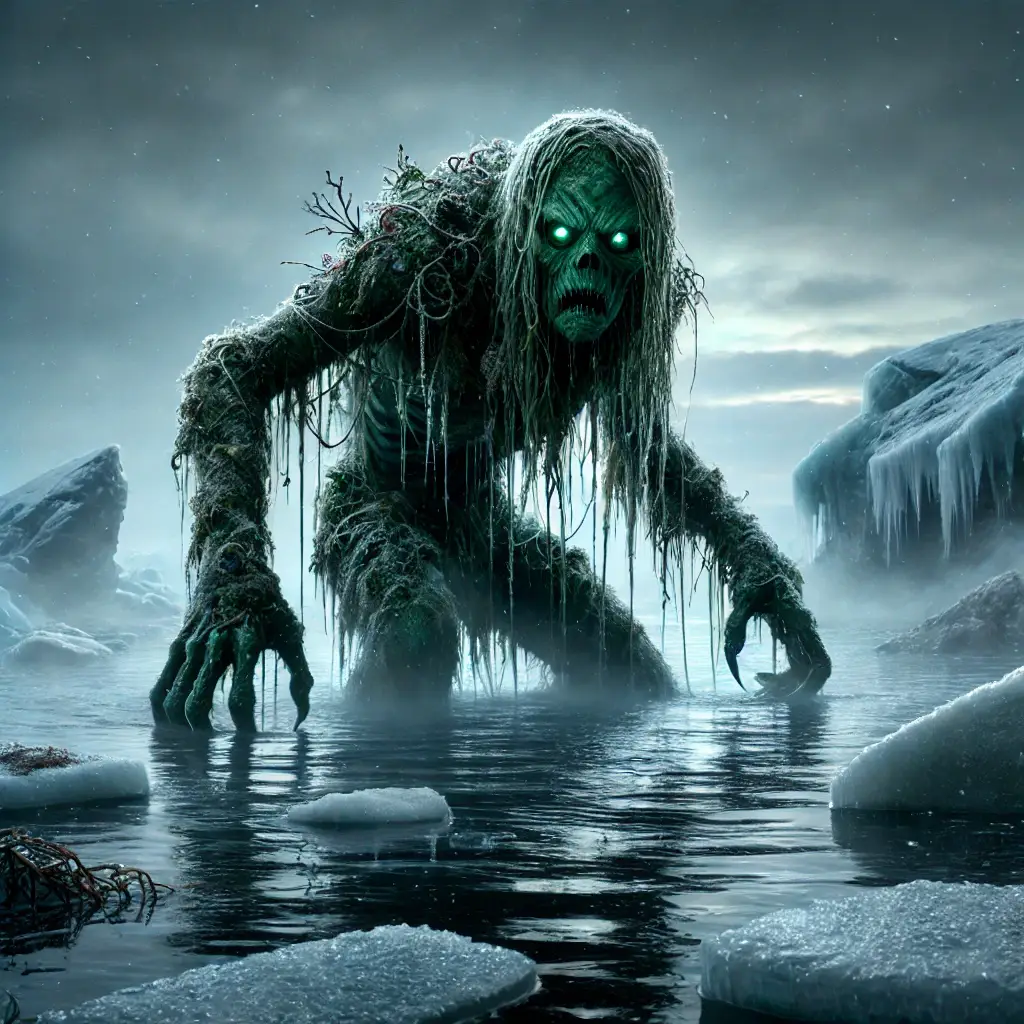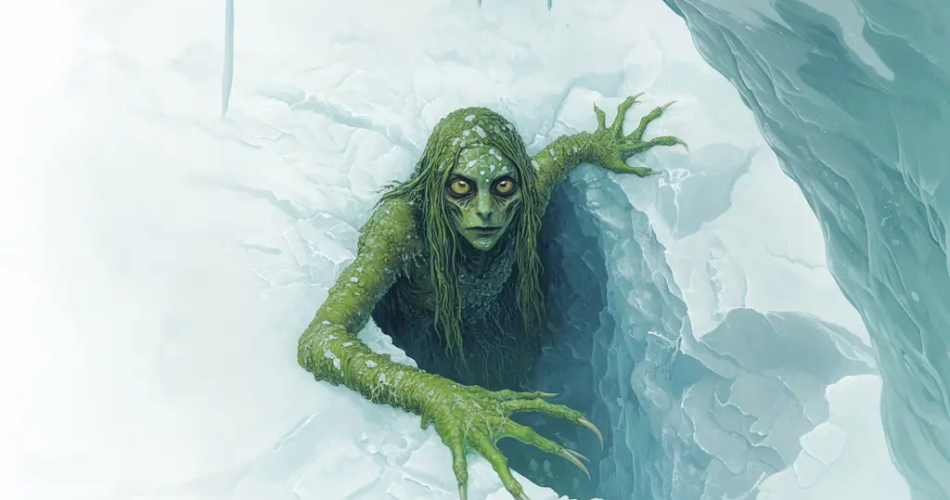Like all ancient civilizations and cultures, the Inuit had an extensive list of monsters and creatures that form a major part of their mythology. Of all these creatures, the Qalupalik is unique in its ferocity and wickedness.
In this piece, we discuss everything you need to know about this ancient Inuit monster.
What is the Qalupalik
The Qalupalik is a malevolent shapeshifting creature that lives under the Arctic Ice and is believed to stalk the shoreline and fishing camps of Inuit communities. According to Inuit mythology, the Qalupalik targets little children who are careless enough to play too close to the shore or on thin Ice floes.
The Qualupalik hypnotizes these children and drags them down into the dark, icy water where she lives.
Origin of the Qalupalik
Like most creatures in Inuit mythology, the legend of the Qalupalik was probably formulated to serve as a cautionary tale for children.
The Inuit lived in the harsh and unforgiving environment of the Arctic, where it was common for children who wandered too close to the water to fall in, drown and disappear without any trace.
The legend of the Qualupalik provided an explanation for these mysterious disappearances. It also served a more practical purpose of instilling fear in children, teaching them to be more careful around the Arctic’s dangerous and unpredictable waters.
What does the Qalupalik look like?

This ancient creature is described as half human and half sea creature. Her green, slimy skin is covered in scales, her arms are long and flexible, and her hands are webbed. The creature also has long, green, slimy hair and long fingernails, which she uses to hold onto children.
The Qalupalik wears the Amautik, a traditional cloth worn by Inuit women. The amautik has a pouch in the back just below the hood.
When the Qalupalik grabs a child, she tucks it into her amautik and disappears into the water with the child, never to be seen again.
Powers and Behaviour of the Qalupalik
One of the Qalupalik’s most distinctive powers is its ability to shapeshift. According to Inuit myths, the creatures can transform a seal or whale and then travel through the water quickly.
The Qualupalik also has the ability to hypnotize children that play too chose to the water. It does this by producing an ethereal humming or tapping sound, immobilizing the child long enough for the creature to move close enough to grab the child, usually by the ankles.
Why does the Qalupalik Kidnap Children?
There are two major explanations for the motivations of the Qalupalik. The first one states that the creature kidnaps children mainly for food. As soon as the children are kidnapped, they are drowned, torn to pieces and devoured by the creature.
Another explanation is that the Qalupalik kidnap children to keep herself young and in a state of eternal youth. Children who are dragged underwater are induced into an eternal sleep. As the child sleeps, the Qalupalik feeds on the life essence and innocence of the sleeping child. The child gets older while the creature gets younger and stronger.
Can the Qalupalik be killed?
While the Qalupalik is in its natural state, it can not be harmed by any man-made weapon. However, the ancient Inuit hunters have developed a cunning way to kill the creature.
When they find it, they call out to it and praise it, encouraging it to transform into a seal or whale. The creature is vulnerable in this state, and as soon as it transforms, it is immediately attacked and killed.
The Qalupalik in Popular Culture
The Qalupalik legend has found its way into popular culture in recent years. Books, television shows, and even animated series have brought the myth to a wider audience, introducing people outside of Inuit communities to the eerie creatures of the Arctic seas.
One notable example is the inclusion of the Qalupalik in “Tungijuq,” a short Inuit film that explores themes of nature, life, and death through Inuit mythology.
The Qalupalik also appears in children’s books, like Michael Kusugak’s “A Promise is a Promise,” which brings the tale to a younger audience in a way that balances both the scary and moral elements of the story.
Conclusion
The legend of the Qalupalik represents the mysteries and dangers of the Arctic environment. It shows the importance of adhering to the rules that govern life in such a harsh place. Her story, passed down through generations, continues to captivate and teach. It is a reminder of the enduring power of myth to reflect and shape the human experience.
As Inuit culture continues to evolve and adapt to modern times, the Qalupalik remains a haunting and fascinating symbol of the delicate balance between humanity and nature — a balance that, even today, is critical for survival in the Arctic.
